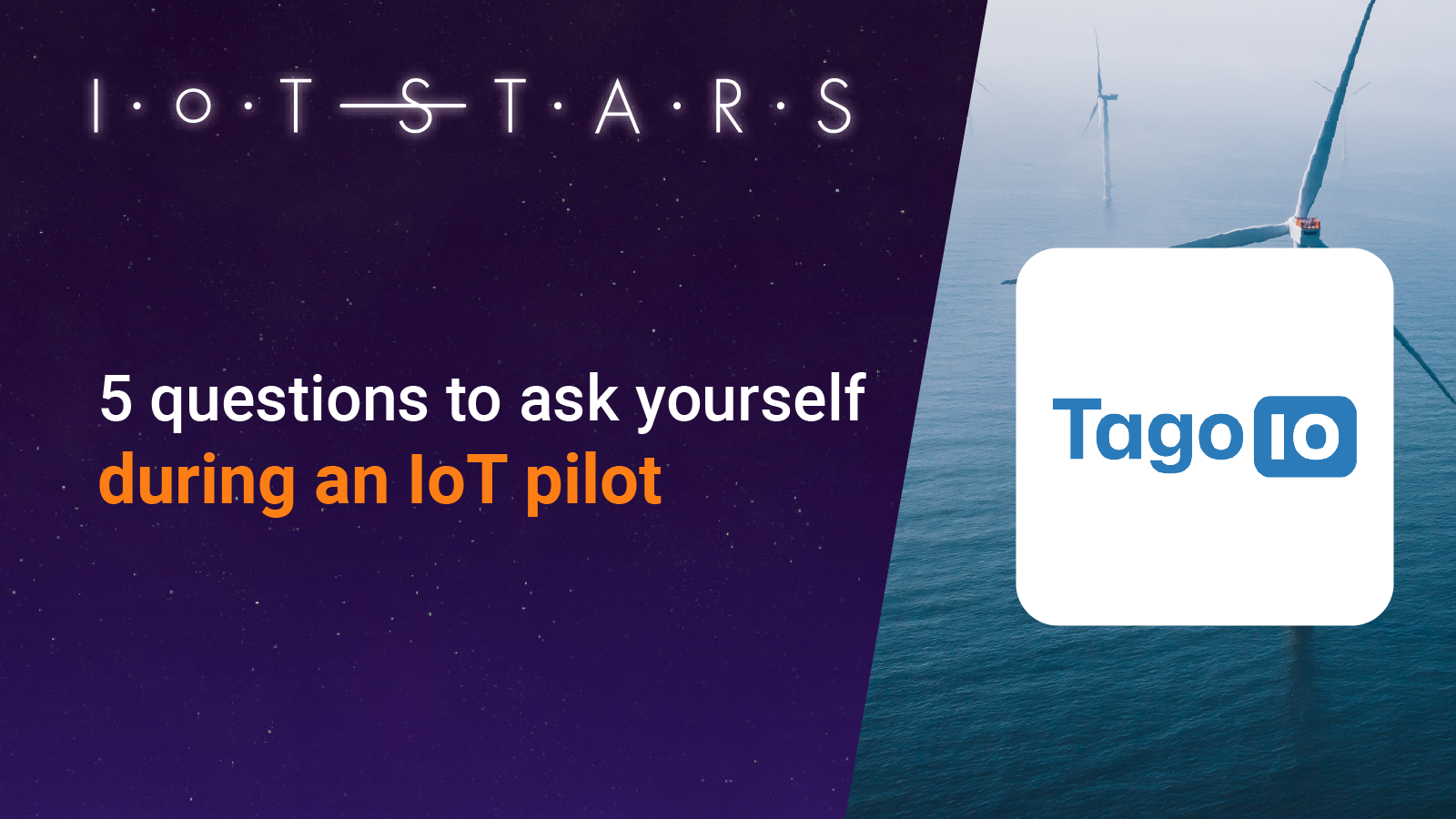IoT Pilots are not to prove the technology, it’s to prove your business case

This article is based on a conversation with Fabio Rosa, CEO of Tago.io.
IoT projects don’t fail because of the technology — they fail because of bad business cases.
In today’s IoT landscape, the technology has proven itself. Sensors are accurate. Devices are reliable. Connectivity is everywhere; from 4G and 5G to LoRaWAN and non-terrestrial networks. And IoT platforms are powerful, flexible, and customizable.
Yet, despite this maturity, too many IoT projects don't make it past the pilot phase.
Why?
Because companies often treat pilots as technical exercises, instead of what they truly are: business case validations.
5 questions to ask yourself during the pilot phase
A real pilot should force you, and your team, to face some hard truths. Here are five critical questions to ask yourself:
What is the minimum required scale for this project to succeed?
Companies often over-estimate the scale and speed of hardware rollouts. Take an honest look at the numbers and define the required scale of the project to make the numbers work.If I would get free access to hardware / connectivity / IoT platforms, would the business case look significantly different?
There’s an obsession with costs, leading to tough negotiations to scrape off cents per device. If these negotiations have a significant impact on the business case of your IoT project, something is awfully off.Am I ready to change the roles and responsibilities of my personnel if the pilot succeeds?
IoT solutions streamline operations and automate tasks previously handled manually. If your project delivers the expected efficiencies, it will impact job roles and performance metrics. Are you ready to adjust how you evaluate, reward, and organize your team? Are you truly ready for the consequences of success?What transformation does my company need to go through when implementing this IoT project?
New processes, new skills, new departments. A real pilot highlights the organizational changes you must be willing to make, and the likelihood of these changes to succeed. The metrics used to define the success of projects and performance need to be realigned.What additional resources do I need for installing and maintaining the solution? Every connected device requires maintenance, support, and updates. Factor those into your business case at this phase, not during the production phase. Leaders and managers should be prepared to run a marathon, not a sprint. Therefore, additional resources and budget are necessary to achieve the long-term goals.
Focus where it matters
A successful pilot is not one where everything "works" from a technical perspective. A successful pilot is one that proves your business case, that shows you can scale economically, create real value, and transform your operations sustainably.
When you start treating pilots this way, your entire IoT strategy will change for the better. If you want a partner who understands this mindset, and who can help you build IoT projects that go beyond the pilot phase, talk to the team of TagoIO.
About TagoIO
TagoIO is an industry-leading IoT platform designed to empower businesses and individuals to connect, manage, and analyze the growing amounts of data IoT devices generate. The all-in-one platform streamlines data processing and visualization by eliminating complexity, saving businesses time, and freeing up resources so they can innovate their products and services.
The platform is trusted by thousands of businesses that customize and deploy as the backbone of their solutions to connect IoT devices to hundreds of thousands of users worldwide. TagoIO has become a go-to solution for many IoT applications across many verticals, such as Agriculture, Buildings, Energy, Industrial, and Logistics.
From its headquarters in Raleigh, NC, USA, TagoIO supports domestic and international businesses in more than 130 countries to build the best IoT solution. For more information, visit www.tago.io
–
Article by Fabio Rosa (Tago.io) & Laurens Slats (IoT Stars)